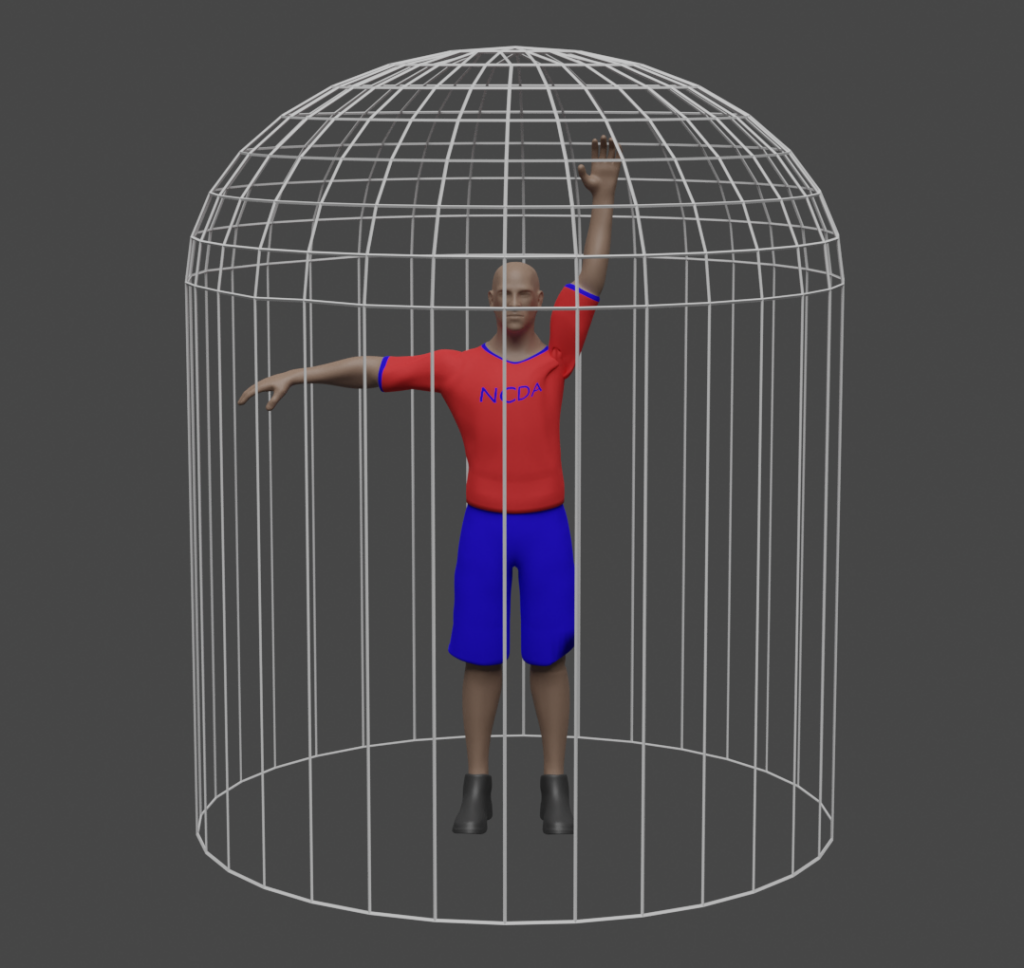Dodgeball is a crazy game. There are so many variables and different situations that can happen that it is nearly impossible to have a rulebook that completely satisfies every scenario. Just this past weekend I saw a play that I have never seen happen before, which is crazy because I have been playing for *censored* years! With that being said, we try very hard to create rules that are all-inclusive, fair, and that do not allow for abuse.
Recently I have noticed that there are a few misunderstandings of the rules that have been going around that I would like to address leading up to the big Ohio get-together that we are having.
- Shot Clock Initiation
3.3.4.1.1 – Shot Clock Initiation – The shot clock of a team acquiring their third ball resumes upon the death of the third ball within their zone (including out of bounds).
This rule has to be the most incorrectly enforced and managed rule of them all. The shot clock does not start for a team until a third ball becomes “dead” within their zone, including the out-of-bounds area within their side of the court. Meanwhile, the shot clock of the opposing team resets as soon as the thrown ball enters the Legitimate Attempt Zone. Looking at the mechanics of a simple play timeline you have;
- Team A with 8 balls
- Team B with 2 balls
- Team A throws 1 ball
- Thrown ball arrives in the target’s LAZ, resetting Team A’s shot clock
- -Some amount of time, milliseconds to several seconds potentially-
- Thrown ball becomes dead, starting Team B’s shot clock
What this means in function is that if a team with eight balls throws only one, their shot clock will ALWAYS be ahead of the receiving team. This is a rules discussion, but I will toss some friendly advice and tell you that if you are the team with the newly acquired third ball, make the other team throw first. If they do not, then it is a shot clock violation in your favor.
- Overtime Shot Clock
We have had several overtimes this season and there have been some played with no third-ball shot clock initiation. Overtime is played exactly the same as regulation time, only with the four changes that are noted in the Overtime Section(3.1.4.3); no time limit, six players per side, constant ten-second shot clock for both teams.
- Legitimate Attempt Zone

3.3.4.3.1 Legitimate Attempt Zone – a Direct Throw within range of a Target, which may allow the Target to make a play on said Direct Throw. This Zone is the Target’s full body reach in any of the 3 dimensions, in order to make a Direct Catch. A Target does not have to make a play in order for the Direct Throw to be considered a Legitimate Attempt, but may only be within the previously specified range
Sadly, because of the lack of advanced metrics and billions of dollars for a full-time film crew, the LAZ exists as a ref’s discretionary call. As the rule states, the limit of the LAZ is within the reachable range of the target. This limit is further broken down in the casebook as six inches beyond the player’s outstretched limb from the standing position. For a six-foot-tall person, this would mean that the total area of the LAZ is seven feet from left to right and front to back and six feet, six inches vertically. So basically a throw needs to be about three feet of a target to be considered legitimate.
Another aspect that refs mixup is the exact timing of the reset. If the target is backing up as the throw is in the air, the LAZ moves with the target. I see refs call throws good all day that are clearly six feet or more short of their target, but they mention that the target was backing up so the throw “was going to be good” but the target moved. Well, that’s too dang bad, the throw never entered the LAZ and should not reset the shot clock.
One last point that was added to the rulebook last year regarding the LAZ is that if the target is kneeling, their LAZ is still the upward reach of their hand, but this is altered down, naturally, as their outstretched arm is much lower.
- Running Clock
If the losing team of the match ever goes down by four points, the game clock becomes a “running clock” and will not stop for resetting of balls between points. The only thing that can stop the game clock after this point is a team timeout. Even if the losing team scores three points immediately after the running clock has been initiated, the clock keeps running. I do not particularly like this rule because we have already seen several three-point comebacks over the last few seasons and with the pace of play recently, it is conceivable that a team could make a four-point comeback, given enough time. However, that is the way the rule exists now, so that is how we will play it (I have already submitted a rule change proposal for this for next year ;)).
- Yellow Cards
Last but not least we have the old punishment stick. Cards are used as a way to keep the game in check and not let the emotions get out of hand. A yellow card results in the offending player’s team removing a player from the current point (usually the offending player but if they are already out another player is chosen) plus the next point the offending player has to sit and the team must play down a player.
There is a long list of things that can be deserving of a yellow card, found in section 3.7.3.2, but they mostly are summarized as either intentionally not following the rules or as unsportsmanlike conduct.
Two specific instances of unsportsmanlike conduct that I would like to touch on include;
Setting a ball just over the throw line to initiate the other team’s shot clock. People do this to try and force the other team to throw their last two balls. An instant yellow card should happen as soon as anyone tries to do this, even if it only gives the other team their first or second ball. This move is in direct contrast to what the third ball initiation rule was created to eliminate; wallballing a team until they have no balls left and then unloading on a defenseless team. Rolling a ball to the other team’s baseline, however, is an acceptable play.
Taunting has more gray area. A player celebrating an out does not qualify for a taunting penalty. If the actions of a player become threatening towards an opponent player, that is when a taunting penalty should be used. The game we play is very physical and emotions can run high during a big match, but at the end of the day it is a game we play for fun and we need everyone to feel safe at events.

























